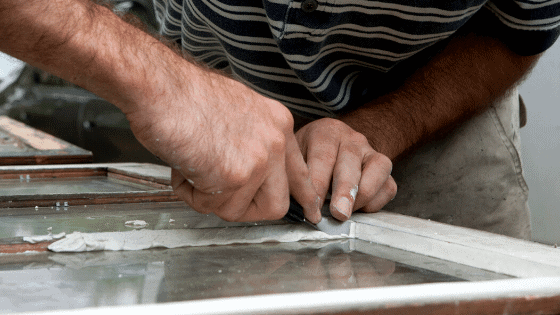The purpose of this blog post is to furnish you with a practical process for reviewing your windows to see if they need to be repaired. Straightforward design and construction of timber sections in your windows mean that sash and case windows can be readily repaired – even the most dilapidated windows are usually capable of being brought back to life.
Most old sash and case windows were manufactured from very durable heartwood timber of a quality that can now be harder to obtain. It, therefore, makes sense to retain and repair original joinery rather than replacing completely with new timber which may be more susceptible to decay.
Where to start
We are going to take a guess that it is unlikely that you will be carrying out repairs to your windows yourself.
However, before you give us a call here at Sash & Case Windows Direct, we suggest that you do some preparatory assessment work before employing us to deliver your repairs.
This is so you can agree on how much work is required and we can establish what the price should be.
Here is a quick inspection checklist for specifying repairs for all common defects.
Assessing your windows
– You will have to look carefully at each of your windows in turn to determine the extent of any defects requiring repair.
– Most defects will be recognised on close visual inspection, but this may not be sufficient in the case of timber decay. If decay is suspected, test the timber with the blade of a penknife – sound timber will resist penetration.
– Open sash fasteners and any other locking devices and operate both sashes, sliding for the full length of travel in each case. Note any stiffness or resistance, as well as any tendency of sashes to drop out of control of the counterbalancing weights.
– If you are unable to move either upper or lower sash, check for signs that paint is sticking sashes together or to the surrounding joinery.
– If you know what you are doing, undo and remove, or rotate clear, the baton rod if fixed by turnbuckles or screws only (i.e. do not attempt if the baton rod is secured by nails).
– Check the hinges in the lower sash.
– Again, if confident, open the weight box pocket piece covers to examine type and condition of weights, and ensure the box is clear of debris that might accumulate. A musty smell indicates the presence of damp and the potential for timber decay.
– Check operation of shutters (if any). Look behind shutters for signs of dampness in plaster or wood-rot in the window case.
Preparation:
Please consider this useful tool guide that you may require:
– Penknife: for testing timber for decay and to loosen seized sashes.
– Wood chisel: for loosening seized sashes (use with care to avoid damage).
– Craft knife: for cutting through paint layers if windows have been painted shut.
– Screwdriver: to free sash locks, screw-fixed baton rods and to open weight box covers.
We hope you found this quick overview useful.
Here at Sash & Case Windows Direct, we have over 25 years of experience in specialised repairing, restoring and replacing of sash and case windows. Give us a call on 0131 510 6868 for a friendly chat on how we can help you.




